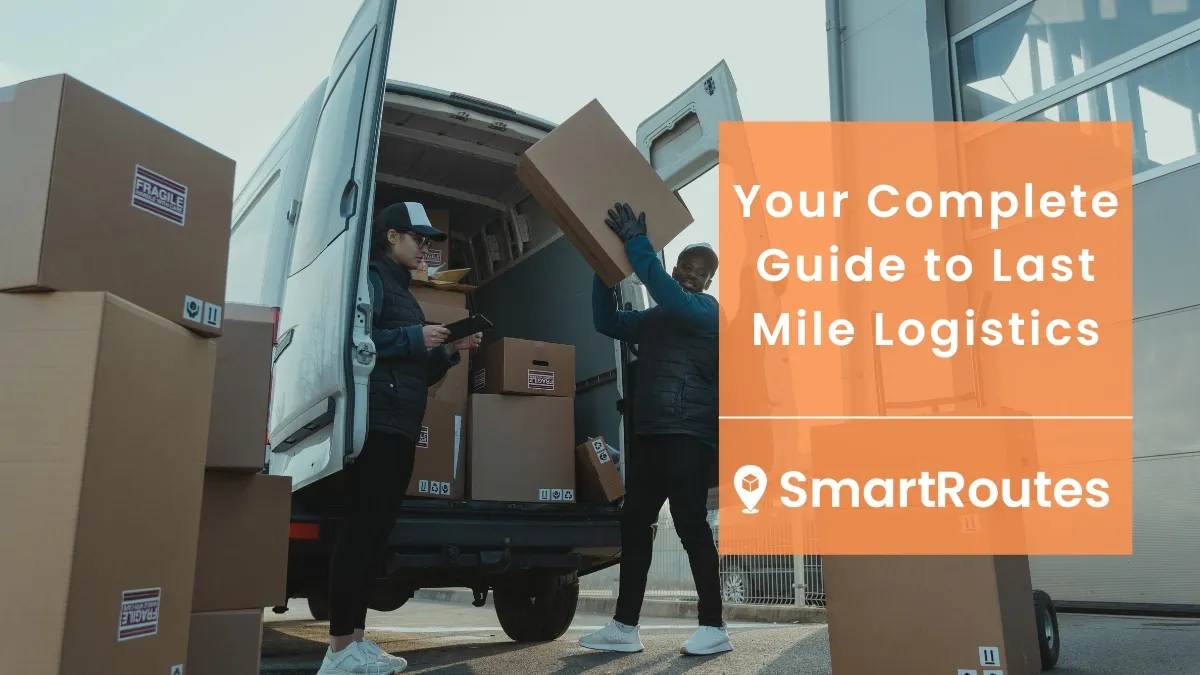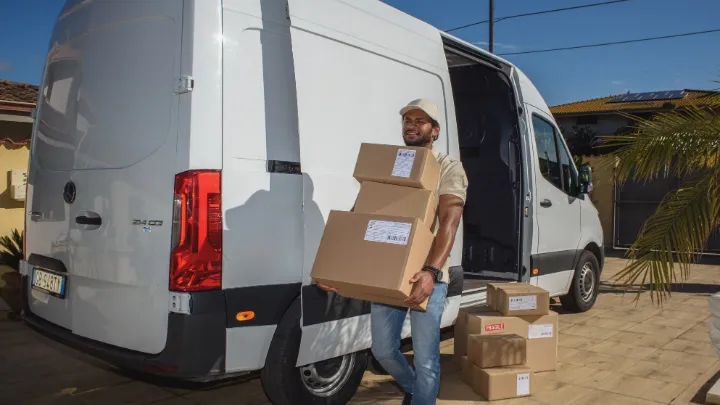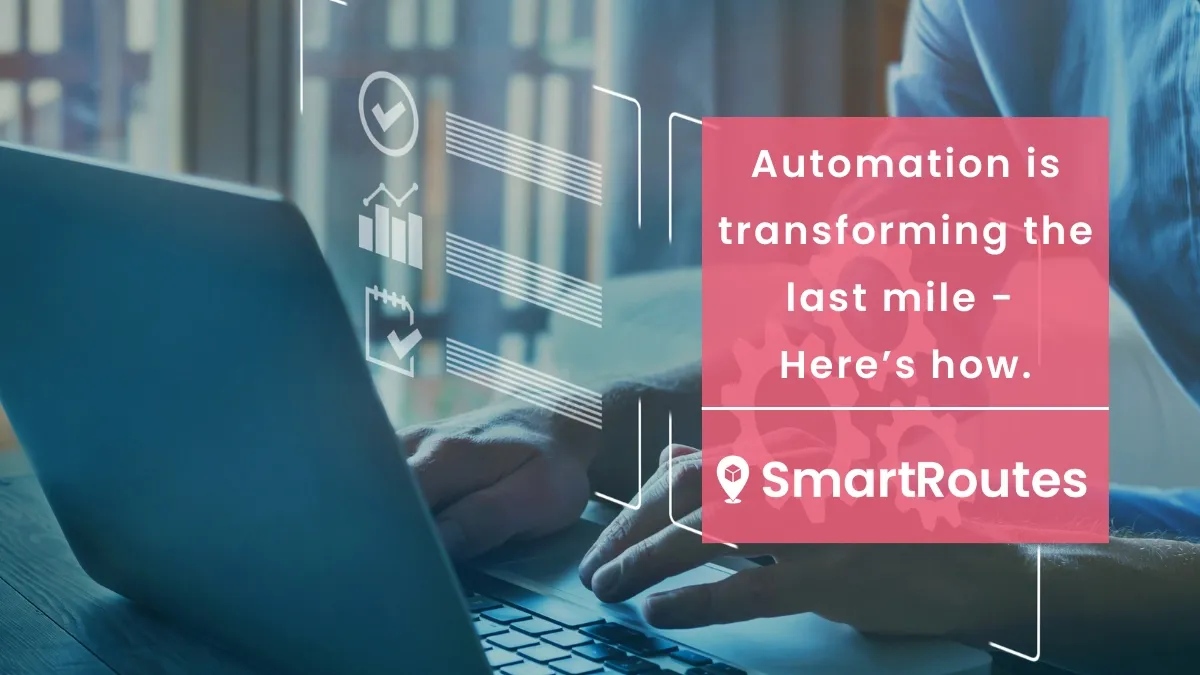Your Complete Guide to Last Mile Logistics
Master last mile logistics with our guide! Optimize deliveries, cut costs, and tackle final mile challenges to boost your business success.

Whether you work in the logistics industry or not, you’ve probably recognized a large increase in delivery vehicles on the road in recent years.
While last mile logistics was pioneered by delivery giants like UPS and FedEx decades ago, recent years have seen an explosion in their their activities as even the smallest mom-and-pop stores have embraced online sales channels. According to a deep-dive market assessment by RationalStat, the 2023 valuation of the Global Last Mile Delivery Market stands at staggering US$ 79.9 billion!
In this guide, we’ll take a closer look at the last mile and some of the key technological advancements that have changed the last mile landscape in recent years.
6 Key Components of Successful Last Mile Logistics
What is Last Mile Logistics?
Last mile logistics refers to the planning stage of the last mile delivery process - where goods are transferred from a warehouse or distribution center to the end customer.
Industry experts, SupplyChainDive estimate the total cost of last mile logistics represents 28% of a product’s total transportation cost. However, estimates elsewhere in the industry put that percentage closer to the 50% mark.
SmartRoutes Last Mile Logistics Software
Streamline your entire delivery process, all from one platform

The Last Mile Problem
Not only is the cost of the last mile disproportionate to the rest of the supply chain, but it also causes a lot of headaches. As the name suggests, the last mile problem has become a bit of a headache for couriers and third-party logistics operators in recent years.
The fact that it has become an industry-recognized term is a testament to that.
Parcel volumes have not only increased for the majority of carriers in recent years, but customer demands have also risen significantly. For the likes of big players like Amazon, this might be seen as a success problem resulting from exceptional customer service in other areas of the buying journey, but for smaller operators and businesses undertaking their deliveries, it has thrown up a big challenge.
The last mile problem comes at a cost to smaller operators too.
Miss a delivery?
The cost of returning it to the depot, re-routing it the next day, and potentially having to contact the customer all eat into the profit margins of the products being delivered, often absorbing every last bit of it.
On top of the cost issues, there are also several other problems associated with last mile delivery, that don’t have the same impact on other stages in the supply chain. For example, traffic congestion and sustainability concerns both adversely impact the last mile.
5 Key Components of Successful Last Mile Logistics
1. Reliable Deliveries
First and foremost, getting goods delivered as promised is the core of a last mile service. And to do that, you need to have either a reliable fleet or a contract with a 3PL with one.

For most small-medium businesses, you’ll likely start by using a third-party operator to do deliveries on your behalf. In this scenario, the most important thing to make it a success drawing up a comprehensive Standard Licence Agreement (SLA). An SLA allows you to commit your delivery provider to provide a minimum level of service at all times, and if they fail to adhere to the agreed KPIs, you can exit the contract and hire someone else.
We’ve put together a comprehensive guide on Delivery Metrics below, but it’s something you might want to seek legal advice on before putting ink on top paper too: How to Measure Delivery Performance: 9 KPIs and Metrics you Should be Measuring.
What you can do right now:
- Purchase or lease a fleet of delivery vehicles and hire delivery drivers to take full control of your last mile delivery operations.
- Partner with a reliable third-party logistics provider to take full advantage of their expertise.
- Optimize delivery routes using logistics software to ensure timely deliveries that keep customers coming back.
2. Speedy Deliveries
If you are about to transition to doing your own direct-to-consumer deliveries, extensive planning is required to ensure deliveries are fast and arrive as expected. Customers expect their deliveries to arrive promptly—if they face delays, they may not make further purchases from your business.
With the amount of competition facing every type of business today, offering fast deliveries really can be a differentiator.
What you can do right now:
- Move to a well-located distribution hub or warehouse allowing for speedy deliveries to customers in close proximity.
- Offer delivery options to customers based on speed—provide time windows.
- If you have a smaller operation, consider using your own delivery fleet for a certain radius and partnering with a reliable 3PL for nationwide deliveries.
3. Customers are Kept in the Loop
Customers want to know their delivery status almost as soon as they have place their order. From when the order has been packed, to loaded and sent out - they crave info!
This not only helps improve customer satisfaction but it also reduces the likelihood of missed deliveries as customers can ensure they will be there to receive their order.
What you can do right now:
- Implement fleet tracking software that keeps your customers informed of their order status with live tracking links and accurate ETAs.
- Send customer notifications when:
- Orders have left the warehouse and are ‘out for delivery.’
- The delivery vehicle is within a certain distance of their location (this is done through geofencing technology).
- The delivery has been completed. Include proof of delivery to ensure customers are fully informed even when they are not present to receive their order.
4. Cost-Efficient Deliveries
As mentioned previously, the last mile accounts for a significant chunk of the overall delivery costs. Costs include fleet management and maintenance, fuel prices, missed and re-deliveries, warehousing costs, driver wages, and so on.

To be profitable, it’s important to look at the cost per delivery. You must strike a balance between keeping the cost per delivery low while simultaneously offering a reliable delivery service.
What you can do right now:
- Implement automated route planning software to reduce miles traveled, minimize backtracking, and eliminate missed and subsequent re-deliveries.
- Improving vehicle capacity utilization and driving shorter routes can lead to needing fewer delivery vehicles or delivering more with the same cost.
- Deliver in zones to reduce backtracking.
5. Provide a Great Delivery Experience
There is a unique advantage small and medium businesses have over big names though; the ability to provide a personal and friendly delivery experience that will go above and beyond that of the faceless corporation.
From our experience, having a driver who delivers with a smile is enough to keep customers coming back for more. Clean uniforms, comfortable delivery vehicles, and fair pay are all likely to encourage your workers to go the extra mile for your customers, and the investment will pay for itself long into the future.
It’s easy for us to say, but giving drivers the right technology is critical too. A delivery app with all the information they need about drop-offs, and a phone that works for them throughout the day are critical components.
What you can do right now:
- Provide enough information to customers to keep them informed via delivery notifications.
- Allow customers to choose or change delivery windows.
- Be upfront about delivery expectations—don’t promise next-day delivery if it’s something you can’t fulfill. Offer what’s achievable and do it well.
Last Mile Logistics Software
Route planning and route optimization are at the very heart of successful last mile logistics.
In fact, in today's logistics world, it would be almost impossible to operate a delivery business without the assistance of it. There are two key reasons for this:
- Automated route planning software is estimated to reduce the time required to plan routes for 5 vehicles by 40 hours per week*. (That’s one full-time employee!)
- Route Optimization is estimated to reduce the distance traveled by delivery fleets by up to 33%*.
*These numbers are based upon pre and post-delivery management software implementations here at SmartRoutes across hundreds of delivery businesses.
With the benefit of economies of scale on the side of Amazon and UPS, the reality is that you need to reduce your overheads at every possible opportunity just to compete.
The beauty of last mile delivery software is that it syncs seamlessly with your online stores and order management systems and creates routes based on the details of orders within those systems (order volume/size, delivery location, customer delivery time requests, etc.).
The reality is that these solutions remove the need for full-time employees and are not prone to errors associated with manual data entry.
Route planning and optimization solutions are standard as part of our delivery management solution, and you can learn more about how they work in the links below:
SmartRoutes - Route Planning Software
SmartRoutes - Route Optimization Software
Case Study: How Ridgeway Wagyu Fuelled The Success Of Their Online Shop With Last Mile Delivery Software
When looking for a successful last mile story, it might seem like an obvious choice to turn to a courier and delivery business that transformed how the business works.
However, independent retailers often serve as the best template for how to make the final mile work. Most have to build the service from scratch, and oftentimes, the survival of the business is completely dependent on making it work.
That makes Ridgeway Wagyu the perfect example of a last mile logistics implementation.
The business is a family-run, farm-to-fork beef business in Ireland. Although it initially started as a small operation, the quality of their product quickly gained a loyal customer base, and a reputation amongst high-end restaurants.
As the business scaled, they realized that there was a much greater demand for their product amongst customers far beyond the confines of the store on their family farm.
After setting up an online store where customers could order and have their beef delivered to their door, the demand quickly spiraled to a point where the logistics were taking up all of the time they previously sprinted crafting their product.
They turned to SmartRoutes for a solution and ended up integrating our delivery management system with their WooCommerce store to automate route planning, route optimization, and notifications to customers about expected delivery time.
Struggling with your logistics operation? We have the answers
At SmartRoutes, we’ve been at the forefront of pioneering the best last mile logistics solution available today (don't just take our word for it, that’s independently-reviewed industry analysis).
If you're either starting your own delivery business or struggling with the chaos of your current operation, we’re here to help.
We’ve helped thousands of businesses to successfully establish ruthlessly efficient delivery processes that have had a measurable effect on business growth.
You can get in touch with one of our team here to set up a quick call to discuss how best to approach your unique delivery needs, and how our delivery management software can help.
Frequently asked questions
1. What is the last mile in logistics?
The last mile in logistics refers to the final stage of the delivery process where goods are transported from a distribution center or hub to the end-user, typically a residence or a business location. It's the last leg of the journey, often the most complex and expensive part of the supply chain due to its proximity to the end consumer.
2. What is the difference between first mile logistics and last mile logistics?
First mile logistics refers to the initial stage of the supply chain, where products are moved from the manufacturer or supplier to a distribution center or warehouse. Last mile logistics, on the other hand, is the final step in the delivery process, where products are transported from a distribution center to the end consumer. The first mile focuses on moving goods in bulk, while the last mile focuses on delivering individual orders directly to consumers.
3. What challenges are associated with last mile logistics?
Challenges in last mile logistics include traffic congestion, high delivery costs, failed delivery attempts, and the complexity of managing deliveries in urban areas. Additionally, customer expectations for fast and flexible delivery times, along with the need for sustainable practices, add to the complexity of last mile logistics.
4. What is the impact of last mile delivery on customer satisfaction?
Last mile delivery has a significant impact on customer satisfaction, as it is the final touchpoint in the purchasing process. Timely, reliable, and transparent delivery processes can enhance customer loyalty, while delays, missed deliveries, or lack of communication can lead to dissatisfaction and lost business. Ensuring a smooth last mile delivery experience is crucial for maintaining a positive brand reputation.
If you enjoyed this blog, you might also be interested in:








